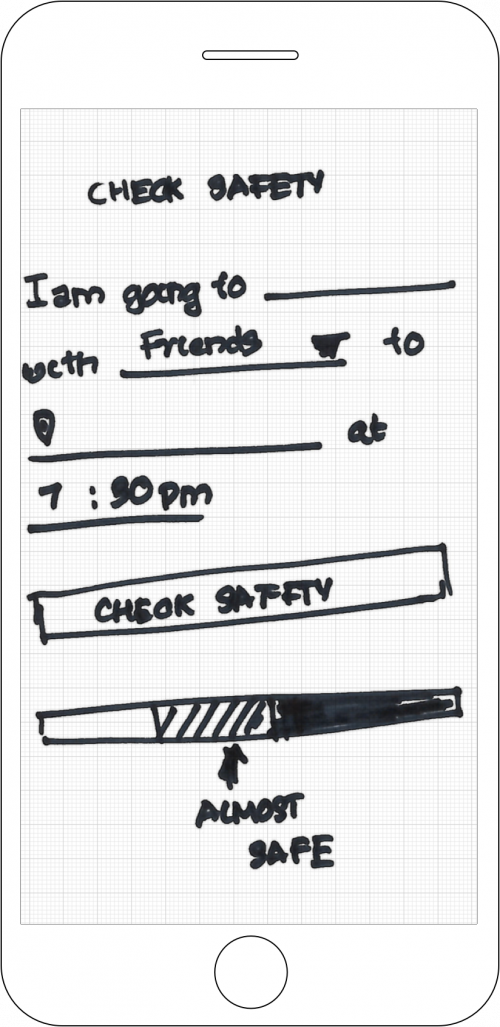How might we...
...use existing visual and interaction metaphors to explain multiple data inputs in an unfamiliar forecasting application?
We can borrow design patterns from familiar forecasting services, like the weather, to help people understand and use a new AI-driven service.
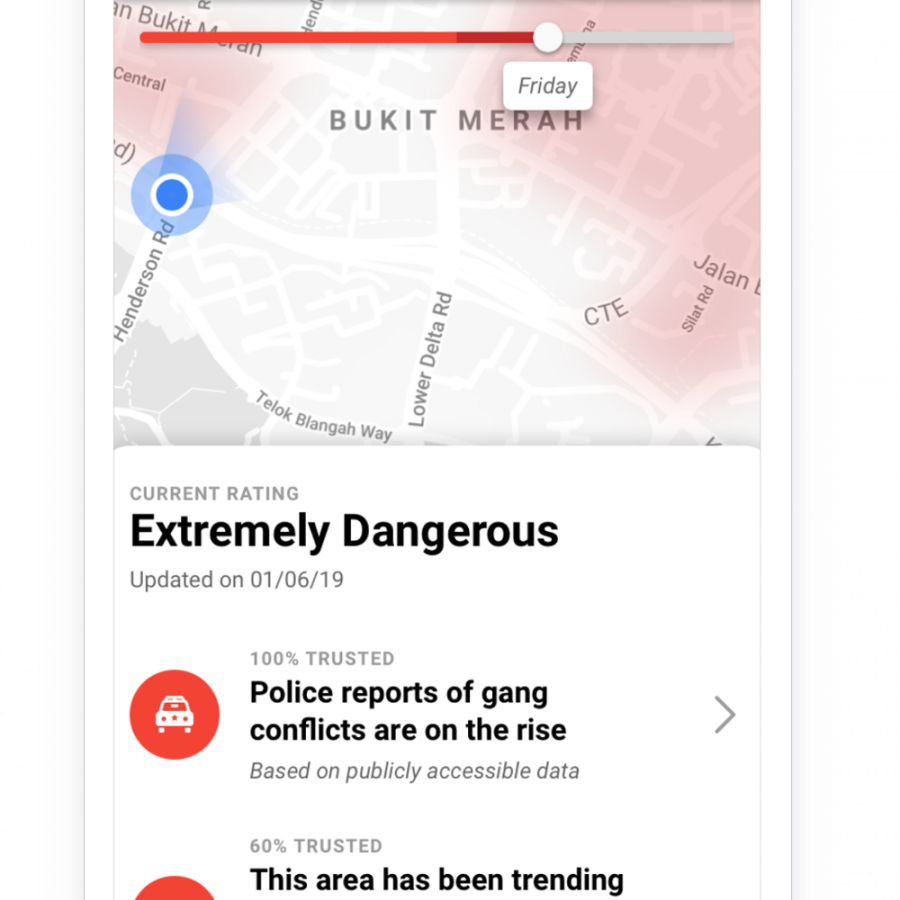
‘Sayfe’ is a fictional mapping and transit app designed to help people avoid areas that the service has predicted may become a public safety risk, suggesting alternative routes.
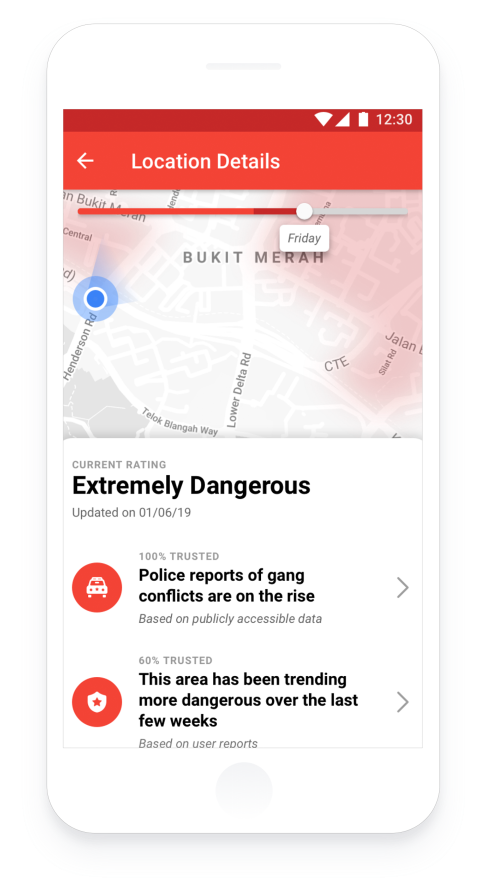
This fictional app takes input from a wide variety of sources — publicly-accessible data, user reports, and news stories — and uses them as part of a model that forecasts public safety levels in particular areas of a city.
How might we...
...use existing visual and interaction metaphors to explain multiple data inputs in an unfamiliar forecasting application?
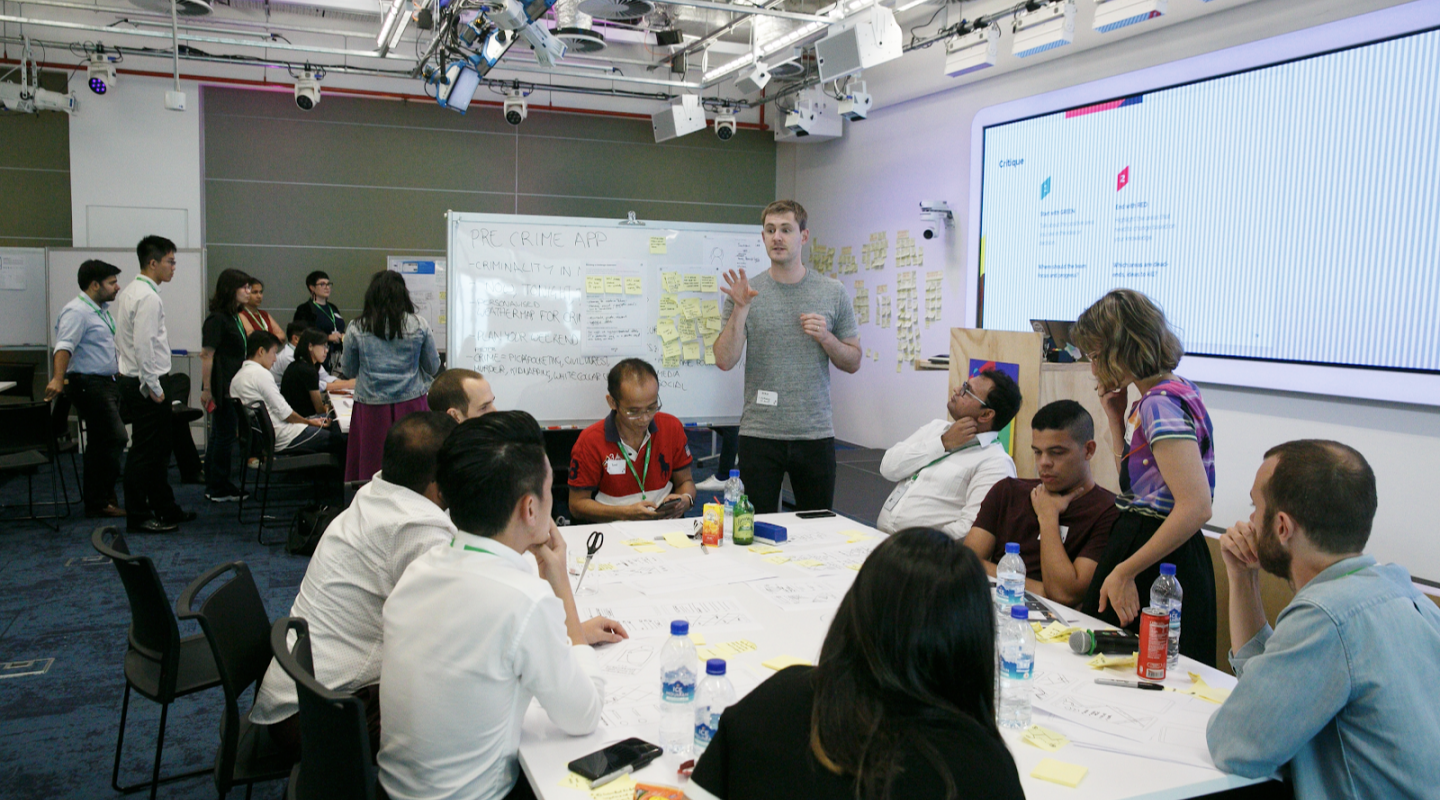
Team Sayfe discuss initial concepts
Most people probably wouldn’t consider themselves experts in forecasting and prediction, or think that it’s a major part of their day-to-day lives.
However, there is an established visual and interaction vocabulary around located forecasts with which most people would be familiar: weather forecast diagrams and apps.
The ‘Sayfe’ app borrows the "heatmap" concept often used in weather forecast apps to indicate the likely safety of a particular area, and offers a layer control similar to a mapping app to turn data sources on and off.
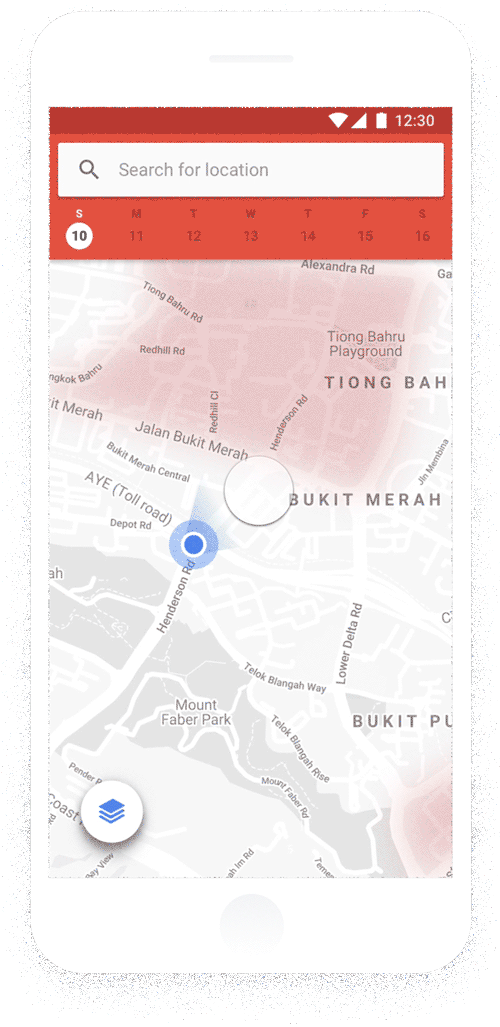
As the prevalence of apps and services that use AI and existing data to make predictions grows, people who make and interact with these products will need to develop a shared design language around changes in data and certainty over time.
We can use this hypothetical app as an exercise to think about how designers can borrow metaphors and approaches from existing services or interfaces that deal with extrapolation, prediction, and uncertainty, and apply them to new and emerging concepts.
Where else could designers look to in order to establish an understandable design language around forecasts and predictions?
